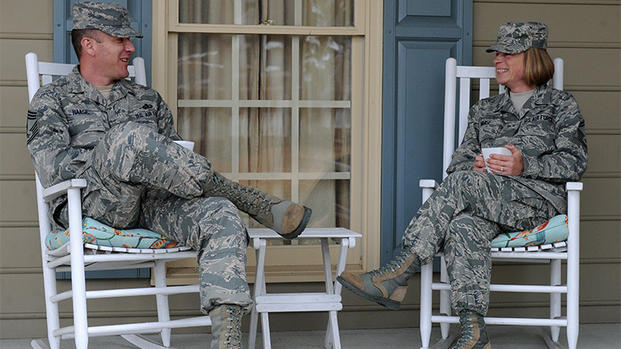After a few years in this job, I've discovered that there are a surprising number of dual military couples living overseas, and that there is a lot of confusion about the Overseas Housing Allowance (OHA) works for dual military couples.
OHA is the allowance paid to military members who are stationed overseas and lease private, non-government housing. Military members are paid OHA in the exact amount of their contracted rental payment, up to the limit for their location, rank, and dependency status. For example, if Airman Normandy rents a house in England and his rent is £1000 a month, his paycheck with include OHA in the amount of dollars that equals £1000 (assuming that his rental cap is higher than £1000.) The amount of the rent portion of the OHA payment never exceeds the actual expenses incurred.
If multiple single service members share accommodations, the rental amount can be divided in any fashion, as long as the total amount paid in the OHAs does not exceed the actual rental expenses. Thus Airman Normandy and Airman Brittany could share a house that costs £1500, and each pay £750, or one of them could pay £700 and one could pay £800.
When a dual military couples jointly occupies leased housing overseas, they are treated as separate entities for purposes of OHA. They are each eligible to claim OHA costs up to the amount of their OHA limit, but the total payments between the two of them may not exceed the actual amount of rental expenses that are being paid on their property. This is true regardless of whether or not they have dependents. If they do have dependents, one service member (usually the more senior) is eligible to receive up to the amount of OHA at the with dependents rate, and the other service member is eligible to receive up to the amount of OHA at the without dependents rate.
Because OHA is never paid in excess of actual expenses, many service members feel like they are missing out on the "extra" money they make when receiving BAH while in the United States. This is due to the differences in the way that OHA and BAH area calculated.
Questions? Ask away. I've become surprisingly smart about this topic!










